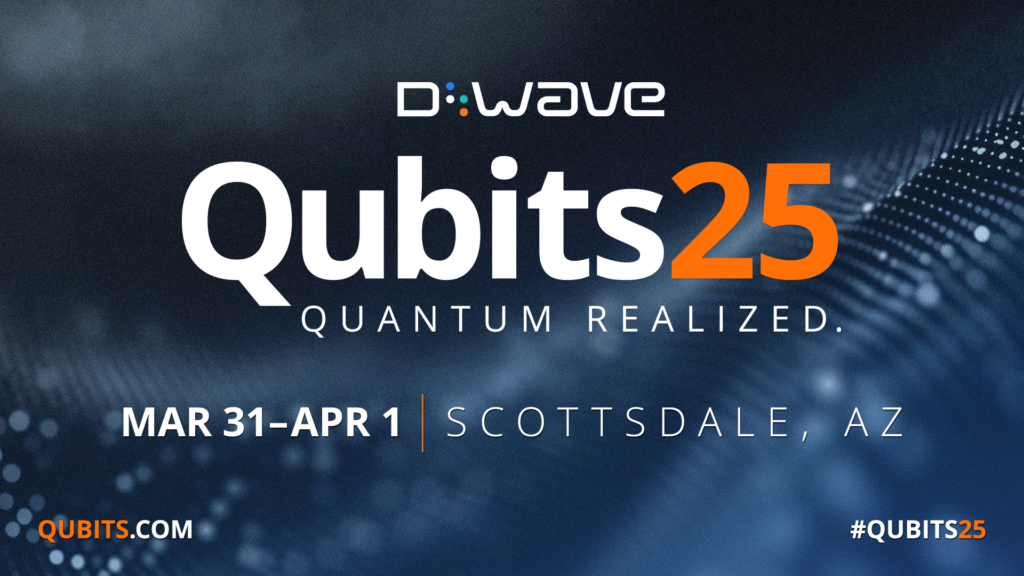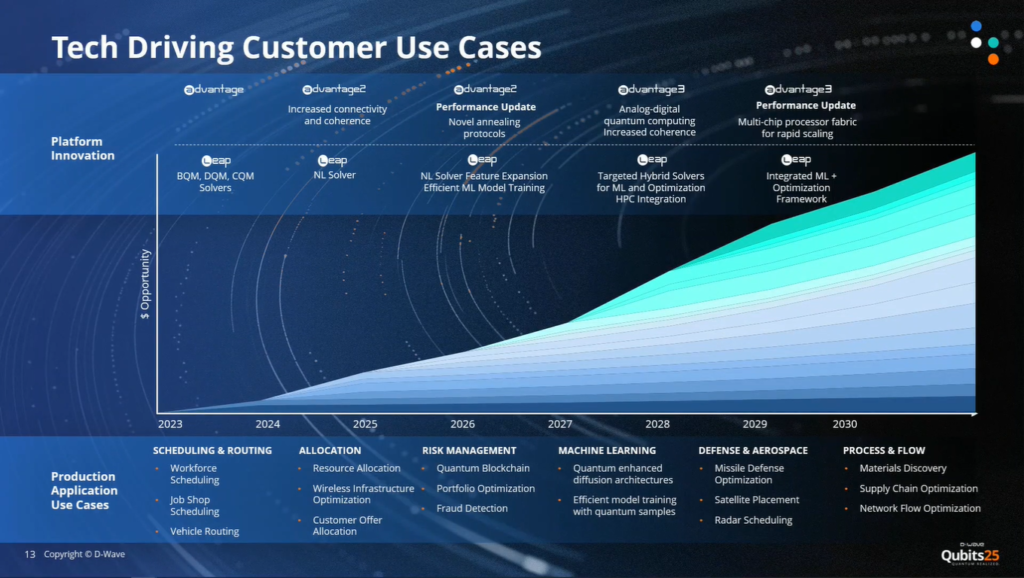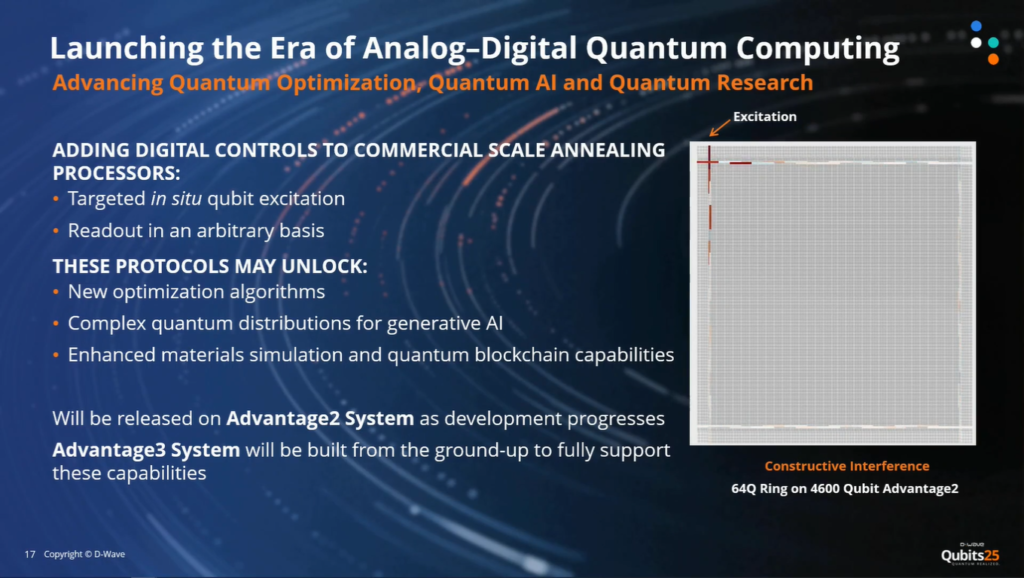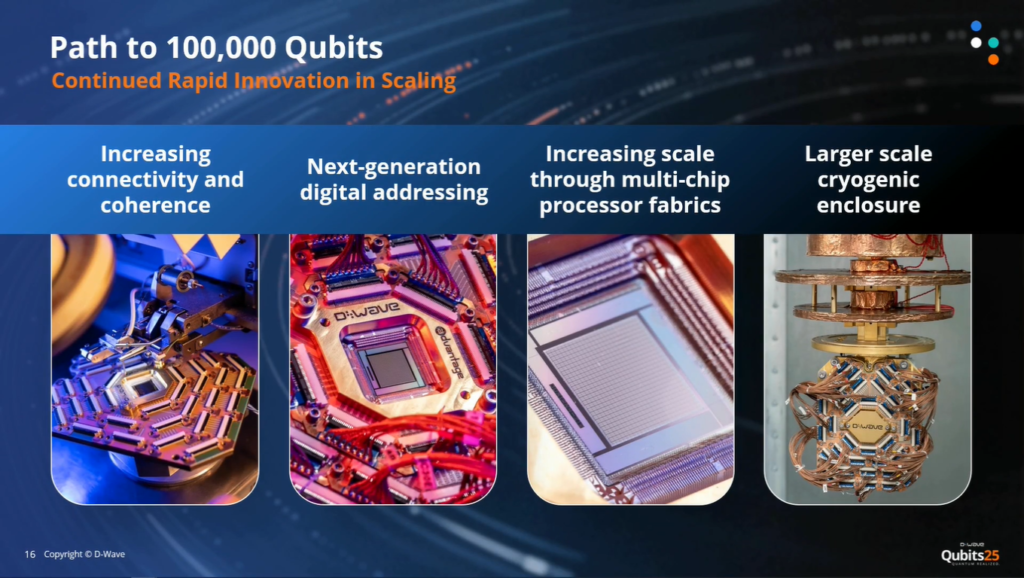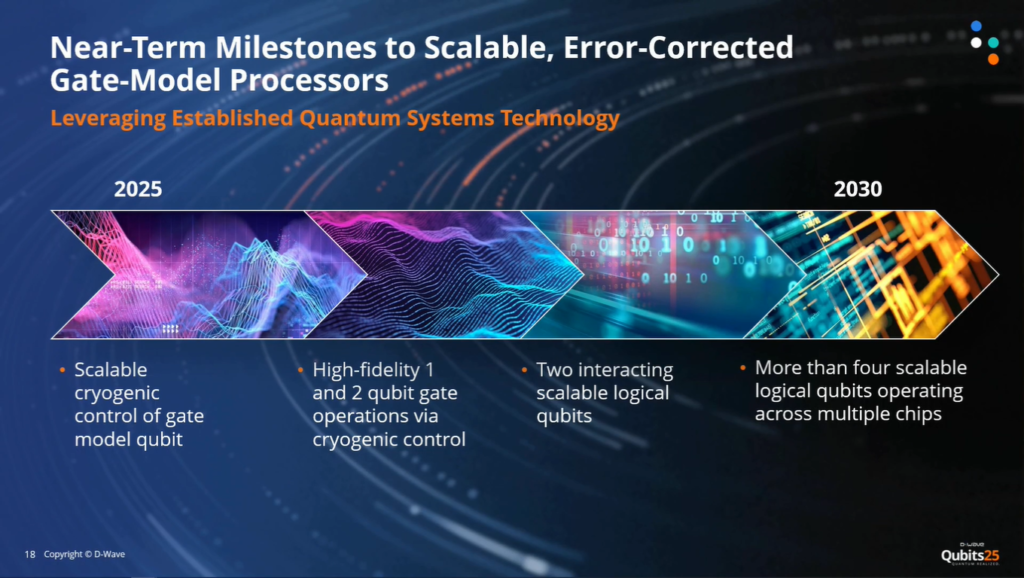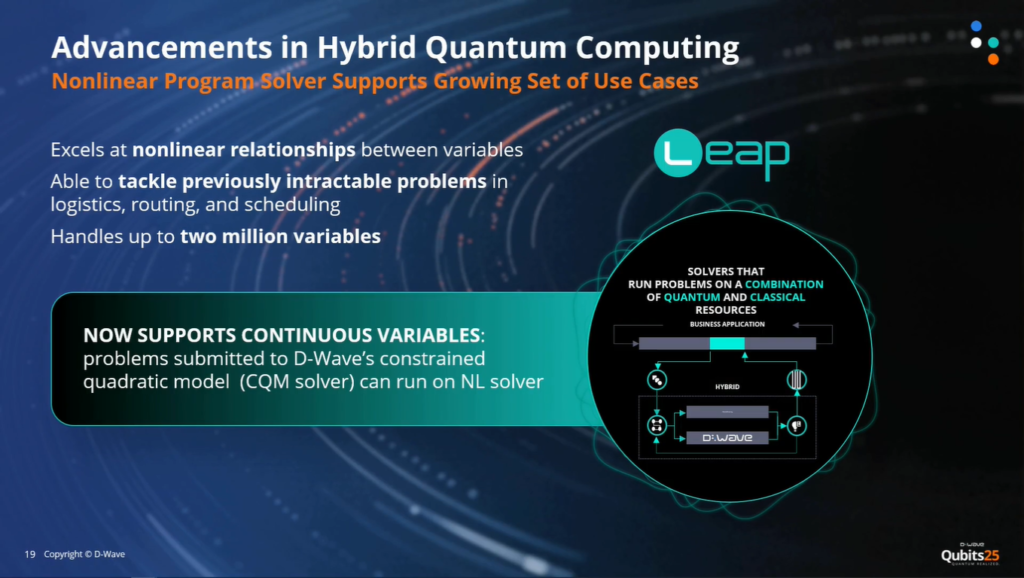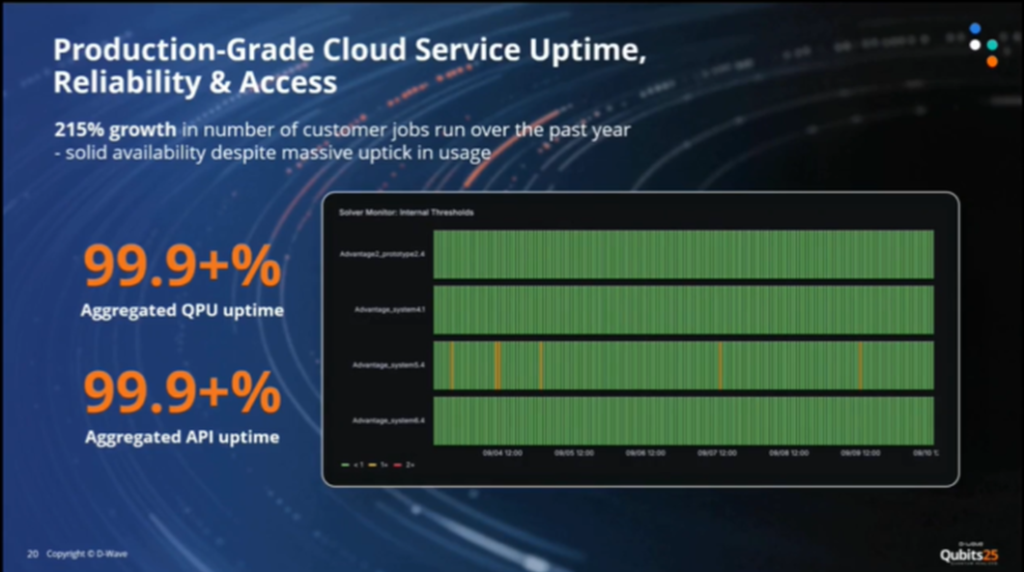D-Wave recently held its annual Qubits Conference to an audience of a few hundred in-person attendees live and many hundreds more viewing by video. The general mood was upbeat with the company management providing an update on their technical roadmap and also a large number of sessions including talks from over a dozen end users about their projects. We will report on some of the highlights including details they revealed about their development roadmap and additional comments describing some of the other strengths the company has for providing a complete, easy-to-use, offering to their customers.
Quantum Annealing Hardware Roadmap
D-Wave has been working on their Advantage2 annealing processor for several years now having first described it in January 2024. Advantage2 provides significant improvements over its earlier Advantage processors including new topologies that provide 20-way qubits connectivity, 40% higher energy scale, longer coherence times, lower flux noise and other improvements. Last year, the company made a prototype 1200+ qubit version available on their Leaf Quantum Cloud Service and both D-Wave and its customers experienced significant performance for those customers who had problems that could fit into the 1200 qubits.
At the conference, the company announced that they will be releasing the final version of the Advantage2 with 4400+ qubits on their Leap Cloud Service very soon. The processor will include D-Wave’s Fast Anneal feature that provides users with extended control of the annealing times. This feature can help a user reduce the impact of external disturbances such as thermal fluctuations and noise. In 2026, an Advantage2 Performance Update processor is expected to be introduced that will support novel annealing protocols. In order to provide better results for optimization, the company is working on a feature called Cyclic Annealing. that will provide even more user control over the annealing process and allow a users to start out in a known state and perform both reverse & forward anneals to achieve a more optimized solutions.
The company is planning to release their Advantage3 processor in the 2028 timeframe based upon a completely new design. A feature that will be supported in these processor is what D-Wave calls Analog-Digital Quantum Computing. This feature will allow a user to excite a specific qubit in-situ and then move it around with SWAP gates, It will also allow readout of the qubit state on an arbitrary basis. These features will make it easier for a user to avoid a local minimum in their solution.
An Advantage3 Performance Update processor is expected to be available in the 2030 timeframe. Longer term the company is planning a scaling path for their future annealers to contain over 100,000 qubits. Techniques the company will be using to achieve this size will include further increases in connectivity and coherence, further advances in their cryoCMOS controls for next generation digital addressing, pursuit of multi-chip configurations, and use of larger scale cryogenic enclosures.
Gate Model Hardware Roadmap
The company also discussed their gate-base quantum processor development efforts at the conference. While the company believes their annealers are superior for optimization related problems, they recognize that other problems do require a gate-based machine and the company would also like to eventually service that market. As we first reported on it in 2021, they will be using a flux based superconducting qubit. This newer type of superconducting qubit may have potential advantages over the transmon currently used by others. They are planning to leverage as much as they can of the mechanical, cryogenic control, and other technologies that they have developed for their annealing processors. Their plan is to eventually offer a full fault tolerant gate-based machine in the 2030’s. In the meantime, they are working on creating small prototypes over the next few years including one with two logical qubits within a few years and another one with more than four logical qubits operating across multiple chips by 2030. The error correction code they will be using will support a code distance of 5 using 50 physical qubits.
Software Developments
When D-Wave first started out, uses would need to formulate their programs using a Quadratic Unconstrained Binary Optimization (QUBO) approach consistent with what is implemented by the hardware in order to run it. If a user had a constraint in their problem or used a variable that couldn’t be expresses as a simple 0 or 1, they would have to account for these requirements using additional terms in the QUBO. Since then, D-Wave has implemented over the years several increasingly sophisticated new solvers that could handle these issues automatically and allow the end user to formulate their problem at a more abstract level. The latest advancement in their solver suite is the recent release of a hybrid, non-linear solver that supports constraints along with continuous variables with linear interactions and can handle up to 2 million variables. This new solver makes it even easier for some users to create solutions for their applications for a broader set of real-world use cases. In the coming years, the company plans on continued expansion of its various solver portfolio to include ones tailored for efficient machine learning model training and further HPC integration.
Providing a Complete Easy-to-Use and Responsive Offering
But beyond the technology itself, there are other capabilities a company needs to provide in order to be successful in the marketplace. One of the areas of D-Wave’s strength is providing customers with very good uptime, availability, and response time service. The company has several customers using their Leap Cloud service in a production mode and they depend upon D-Wave to provide a reliable service so that their daily operations are not disrupted. The company reported that it has maintained a 99.9%+ available in the past year and can provide customers with a Service Level Agreement (SLA) that guarantees certain uptimes requirements for those customers. The company has multiple Advantage processors installed in its data center to provide the necessary redundancy and capacity to support high available and fast response time to its customers.
Another capability the company possesses is a Professional Services team that can help customer get up and running quickly. One thing we noticed is that many of the customer’s problems we heard about can often fit into one of four broad optimization categories:
- Resource Allocation
- Production Scheduling
- Workforce Scheduling
- Transportation Routing
Their Professional Services group has great experience of working with these types of problems over many years. So, when a user comes to them with a new application, they can often look at it and determine it is quite similar to one they have worked on before. We talked with one end user where this was the case. D-Wave provided him with some prototype code available on their GitHub library and the user was able to customize it for his application.
As described in one of their presentations, a solution path can typically follow these five phases:
- Problem Discovery
- Problem Description
- Problem Formulation
- Software Implementation
- Test and Iterate
One thing to point out is that one needs to do more than create an interesting proof-of-concept. Integrating the application into the workflow of an enterprise is not trivial. (See a previous article where we wrote about this titled The Last Mile Might be the Toughest). In addition, in many cases the interface to the D-Wave annealer has to be made usable and easy-to-use by operations managers and other non-technical personnel of a company. Shown below is a screen shot of a GUI used by Ford Otosan for one of the applications that has recently been put into production to help optimize and display status of Ford Otosan’s factory workflow.
Conclusion
D-Wave has taken their own path for creating a quantum computing solution that solves customer problems. From what we see, one thing that makes D-Wave different from other quantum providers right now is that they have several customers that utilizing the D-Wave annealers for regular production. And these aren’t just POCs or training exercises, but regular use for facilitating production in the customer’s business operations. We don’t know of any other quantum provider that can say this. And based upon what we saw at the Qubits Conference, we expect there will be more in the coming years.
It is well known is that optimization is a very common problem type in the commercial world. The market potential is very large, but the debate within the quantum computing community is whether or not the quantum approach can be competitive with the constantly improving classical algorithms which are already very good. But we remind people that just having available a solution which has a theoretical technical advantage may not be sufficient. Factors like ease-of-use, support, availability, and reliability are also important to end users and may turn out to be the deciding factor in which path a customer will take.
D-Wave plans on posting videos of their presentations at the Qubits Conference very soon. We will post a link to them on this page when they are available.
April 5, 2025

